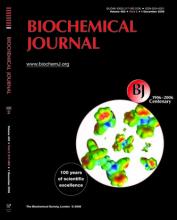 Despite losing a lawsuit against his former mentor, a researcher hasn’t stopped his efforts to discredit his mentor’s work. These efforts have led to new editorial notices — including, most recently, a correction and expression of concern for one paper by a former colleague, who wasn’t even the subject of the lawsuit.
Despite losing a lawsuit against his former mentor, a researcher hasn’t stopped his efforts to discredit his mentor’s work. These efforts have led to new editorial notices — including, most recently, a correction and expression of concern for one paper by a former colleague, who wasn’t even the subject of the lawsuit.
In the 2014 suit, former Brown University postdoc Andrew Mallon said research misconduct by John Marshall — his lab director and former business partner– tainted a 2013 paper published in PLoS Biology. Though the case failed to trigger the retraction Mallon sought, it put his concerns into the public record; the text of the lawsuit includes an accusation of misconduct against Cong Cao — Marshall’s former mentee and the first author of that 2013 paper.
Mallon has since contacted journals to raise concerns about papers by Cao, and two journals have taken action. The most recent move: On Aug. 10, the Biochemical Journal did something we don’t see very often — it issued both a correction and an expression of concern (EoC) for one of Cao’s papers: “EGFR-mediated expression of aquaporin-3 is involved in human skin fibroblast migration,” originally published Nov. 14, 2006.
Judge: No copyright for Mallon, no attorneys’ fees for defendants
Readers may recall that in December 2016, a federal judge tossed Mallon’s lawsuit, saying Mallon could not demand a retraction based on a copyright claim. In a separate filing submitted October 26, 2016, Marshall and his co-defendant, Wayne State University professor Dennis Goebel, asked the judge to make Mallon pay for their attorneys’ fees.
They said that Mallon had acted in bad faith and had abused the discovery process to pull thousands of pages of documents, unrelated to the case and used to:
gin up or resurrect bogus misconduct claims against both Defendants and third parties.
However, their attempt to collect legal fees from Mallon failed, after Judge Timothy Hillman ruled against them.
In January 2016, Mallon forwarded information he obtained from the lawsuit to PLoS Biology about the 2013 paper, including what he felt were damning email exchanges between Marshall and Cao. (The paper has been corrected twice, but not retracted.)
Mallon hasn’t stopped there: In April 2016 he sent emails to Biochemical Journal and Journal of Cellular Physiology, raising concerns about Cao’s work. Mallon added that he shared some concerns on PubPeer, and has monitored discussions about papers by Cao, Marshall, or Goebel, contacting journals when he believes readers have identified something suspicious.
However, he told us he didn’t send materials obtained during the lawsuit to any journal besides PLoS Biology, as he thought that would be “prejudicial.”
Some of his complaints about Cao appear to have worked: In addition to the August notices from Biochemical Journal, last year, as reported by The Scientist, Journal of Cellular Physiology issued two corrections for papers Cao had published.
New concerns for Cao
Papers that Cao has co-authored have now tallied at least seven corrections, two EoCs, and one retraction. He was listed as either first or last author on all of those papers. Cao, now a professor of neuroscience at Soochow University in Taiwan Suzhou, China, did not respond to our request for comment.
In the correction and EoC notice, the journal wrote that image duplication led to the latest correction:
In Figure 5 of the original paper, the authors mistakenly duplicated some panels. The authors have repeated the experiment and a new Figure 5 is shown here.
The notice continued with the EoC, issued by the journal:
The Editorial Board of the Biochemical Journal also have concerns with regard to Figures 1–3 and 5-7. The concerns relating to data and visualization for Figures 1–3 and 5–7 have been conveyed to the authors. The authors stand by the research in this manuscript. Unavailability of the original data has rendered further assessment impossible.
Here’s the PubPeer discussion about the paper, which has been cited 77 times, according to Clarivate Analytics’ Web of Science.
Portland Press, which publishes the journal, told us that it followed Committee on Publishing Ethics (COPE) guidelines after it became aware of a potential problem with the paper and referred the issues to the “authors’ institution for investigation:”
The outcome of the investigation led to a correction of Figure 5. With regard to the rest of the figures and content of article, the authors confirmed that the original data were no longer available, therefore an expression of concern was published.
Like Retraction Watch? Consider making a tax-deductible contribution to support our growth. You can also follow us on Twitter, like us on Facebook, add us to your RSS reader, sign up on our homepage for an email every time there’s a new post, or subscribe to our daily digest. Click here to review our Comments Policy. For a sneak peek at what we’re working on, click here. If you have comments or feedback, you can reach us at [email protected].
Cong Cao is currently a professor in Suzhou University in China, which was called Soochow University.
http://neuroscience.suda.edu.cn/en/PersonalView-B76A522.html
Taiwan has a university having the same name, which was believed to relocated to Taiwan from China many years ago. There is also
a Jiaotong University in Taiwan. almost everything in Taiwan has a root in China.
Thank you, we’ve fixed the link and have updated the location of the university.